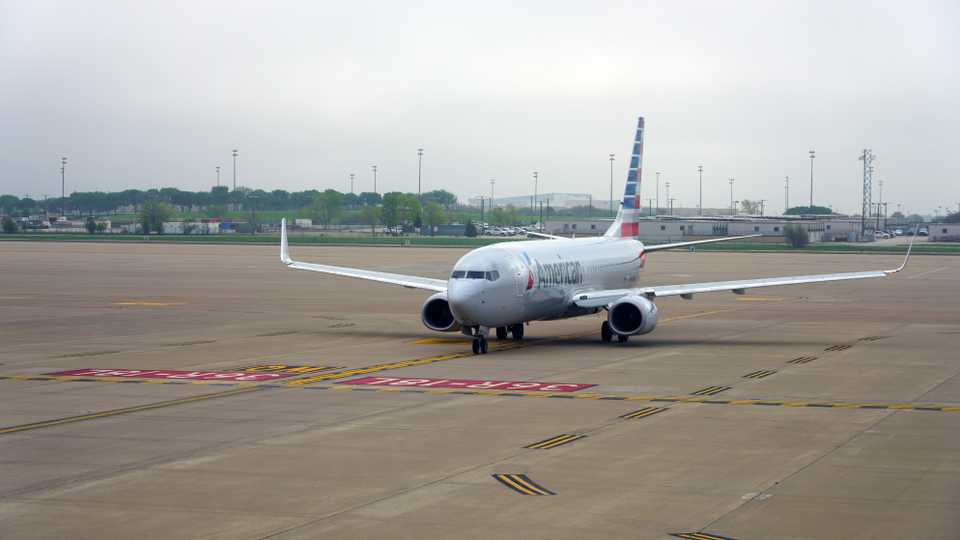American Airlines Set To Offer Airbus A321LR Flights On 5 Transcontinental Routes
American Airlines is making additional cuts at Austin–Bergstrom International Airport (AUS). The Fort Worth, Texas-based carrier has removed flights to Las Vegas, Orlando, New Orleans, Palm Springs, and Reno.
The development comes after the airline also planned to pull its service to Indianapolis in August. While American will still offer flights to several destinations from AUS, it has significantly downsized – cutting over 20 nonstop routes since November of last year.
Reducing service
Three routes have operated on a year-round schedule, while two have been offered seasonally. Beginning in October, American will no longer fly from AUS to Harry Reid International Airport (LAS) in Las Vegas, Orlando International Airport (MCO), and Louis Armstrong New Orleans International Airport (MSY). Seasonal routes to Reno–Tahoe International Airport (RNO) and Palm Springs International Airport (PSP) are not expected to return.
American Airlines’ Strategic Reductions at Austin–Bergstrom International Airport: An In-Depth Analysis
American Airlines, one of the largest carriers in the United States, has recently announced a significant reduction in its services at Austin–Bergstrom International Airport (AUS). This development comes as part of a broader strategy to streamline operations and adjust to changing market demands. The Fort Worth, Texas-based airline has removed flights to key destinations such as Las Vegas, Orlando, New Orleans, Palm Springs, and Reno. This move is notable as it reflects a considerable scaling back of American’s presence in Austin, a city that has seen rapid growth and increased travel demand in recent years.
The Scope of Service Reduction
American Airlines has decided to eliminate several routes, which can be broadly categorized into year-round and seasonal services. The year-round routes being cut include flights to Harry Reid International Airport (LAS) in Las Vegas, Orlando International Airport (MCO), and Louis Armstrong New Orleans International Airport (MSY). These routes are set to cease operations starting in October. Additionally, the seasonal routes to Reno–Tahoe International Airport (RNO) and Palm Springs International Airport (PSP) will not be returning.
This decision follows a previous announcement by American to withdraw its service to Indianapolis, which is slated to end in August. Collectively, these changes indicate a strategic pivot as American Airlines adjusts its route network, potentially in response to shifts in demand, operational challenges, or broader economic factors.
Historical Context and Impact on AUS
Austin–Bergstrom International Airport has experienced significant growth over the past decade, becoming a major hub for both domestic and international flights. This growth has been fueled by Austin’s booming tech industry, cultural attractions, and a burgeoning population. American Airlines has played a substantial role in this expansion, offering numerous non-stop flights and becoming a key player in the airport’s operations.
However, the recent reduction in services marks a sharp departure from this trend. Since November of last year, American has cut over 20 non-stop routes from AUS, signaling a substantial downsizing. This contraction could have several implications for the airport, the local economy, and travelers who rely on these connections.
Analyzing the Reasons Behind the Cuts
Several factors could be driving American Airlines’ decision to reduce its services at AUS:
- Market Demand: The pandemic has fundamentally altered travel patterns, with fluctuating demand for certain routes. American Airlines might be responding to decreased passenger numbers on specific routes, leading to the decision to cut less profitable services.
-
Operational Efficiency: Streamlining operations can lead to cost savings. By focusing on more profitable routes and reducing less efficient ones, American Airlines could be aiming to improve its overall financial health.
-
Competitive Pressure: Austin is served by multiple airlines, including Southwest Airlines, which has a significant presence at AUS. Increased competition might have influenced American’s decision to cut certain routes where they face stiff competition and lower margins.
-
Strategic Reorientation: The airline industry is dynamic, and carriers constantly re-evaluate their networks to align with long-term strategic goals. American Airlines might be reallocating resources to other markets or focusing on international expansion.
Implications for Travelers
The reduction in services at AUS will have a direct impact on travelers who frequent the now-terminated routes. Here are some potential consequences:
- Limited Connectivity: The removal of non-stop flights to popular destinations like Las Vegas, Orlando, and New Orleans means passengers will have fewer direct options. This could lead to longer travel times and the need for connecting flights.
-
Increased Travel Costs: With fewer flight options, travelers might face higher ticket prices due to reduced competition. This could particularly affect budget-conscious passengers who rely on direct, affordable flights.
-
Inconvenience for Business Travelers: Austin’s thriving business community, especially in the tech sector, relies heavily on efficient air travel. The cuts could disrupt business travel plans, leading to potential delays and logistical challenges.
Broader Economic Impact
The reduction in American Airlines’ services could have ripple effects on Austin’s economy. Air connectivity is a crucial factor for economic growth, influencing business decisions, tourism, and local employment. Reduced air services might deter new businesses from setting up in Austin or lead to decreased tourist inflows, affecting the hospitality and service sectors.
Future Prospects and Strategic Adjustments
Despite these reductions, American Airlines continues to operate several routes from AUS, maintaining its presence in the market. The airline’s future strategy might involve focusing on more profitable routes, enhancing customer service, or investing in other markets where demand remains robust.
Response from Other Airlines
The reduction in American Airlines’ services could create opportunities for other carriers to fill the gap. Competitors might increase their frequencies on the affected routes or introduce new services to cater to the displaced demand. This could potentially benefit travelers by providing alternative options and maintaining competitive pricing.
American Airlines’ decision to cut multiple routes from Austin–Bergstrom International Airport marks a significant shift in its operational strategy. While the immediate impact on travelers and the local economy might be challenging, it is also an opportunity for the airline to streamline its operations and focus on more profitable segments. For Austin, this development underscores the need for adaptive strategies to maintain its growth trajectory and ensure continued connectivity. As the travel industry continues to evolve, stakeholders will need to closely monitor these changes and adjust accordingly to navigate the new landscape.






